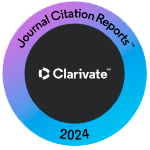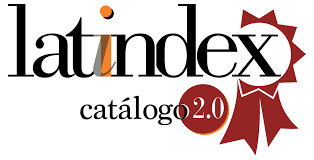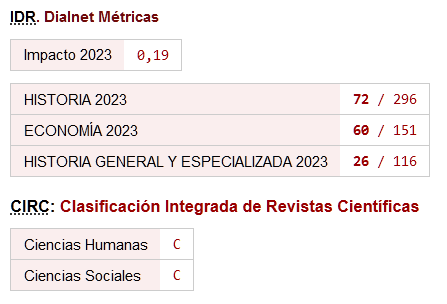An old accounting method updated
“Pushdown accounting”: its application by spanish savings banks in its final stage
DOI:
https://doi.org/10.26784/issn.1886-1881.v18i1.424Keywords:
Pushdown Accounting, FASB, IFRS, Fair value, Savings Banks, Central Bank of SpainAbstract
An old accounting method, Pushdown Accounting, emerged in the 1970s in the United States,
resurrected again in this century as of 2014, consists, in a combination of companies, in using the accounting
valuation criteria of the acquiring company in the separate financial statements of the acquiree. After analyzing
the practices and regulation that arose for this purpose in the American context, and verifying the silence of
the international accounting regulations on this matter, an application of this method is contemplated in Spain,
on the occasion of the creation of the Sistemas Institucionales de Protección (Institutional Protection Systems)
(SIP), which led to the establishment of banking entities into which the Savings Banks were integrated, whose
separate financial statements on the date of their integration, December 31, 2010, applied the Pushdown
Accounting method, with the express authorization of the Banco de España (Central Bank of Spain)
Downloads
References
American Institute of Certified Public Accountants (AICPA). (1979) Task Force on Consolidation Problems: Push down accounting; Issues paper. https://egrove.olemiss.edu/aicpa_iss
Accounting Research Bulletin (ARB) nº 51 (1959) Consolidated Financial Statements. 001-arb_51_consolidated_financial_statements.pdf (ny.gov)
APB Opinion nº 16 (1970) Business Combinations. APB 16: Business Combinations (fasb.org)
Baluch, C. y D. Burgess, R. Cohen, E. Kushi, P.J. Tucker y A. Volkan (2010). Consolidation theories and push down accounting. Journal of Finance and Accountancy, julio. Microsoft Word - 10442 (aabri.com)
Cañibano, L. (2020) Un antiguo método contable reactualizado: Pushdown Accounting. Su aplicación por las Cajas de Ahorros españolas en su etapa final. Revista AECA 131, pp. 4-8. revista_aeca_131_lc.pdf https://doi.org/10.26784/issn.1886-1881.v18i1.424
Cañibano, L. (2012) Combinación de negocios mediante adquisiciones inversas. Revista AECA, nº 99, Septiembre, pp. 12-13. CUB PA WEB (aeca.es)
Cañibano, L. y A. Mora (2000) Características cualitativas de la información financiera. En: Tua, J. El Marco Conceptual para la Información Financiera. AECA, Madrid, pp. 129-160. Características cualitativas de la información financiera | Request PDF (researchgate.net)
Chen, K. y R.M. Elbolok (2015) Is Pushdown Accounting Lifting you up? The Journal of Corporate https://doi.org/10.1002/jcaf.22080
Accounting & Finance, September/October, pp. 55-59. doi.org/10.1002/jcaf.22080
Cunningham, M.E. (1984) Push-Down Accounting: Pros and Cons. Journal of Accountancy, June, pp. 72-77.
Deloitte (2020) A Road Map to Accounting for Business Combinations. Appendix A: Pushdown Accounting, pp. 263 - 278. A Roadmap to Accounting for Business Combinations | Deloitte US
Deloitte (2016) A Road Map to Pushdown Accounting. Roadmap Series (deloitte.com)
EY (2020) Business Combinations. Appendix B: Pushdown accounting and other new basis issues, pp. B1-B16. Financial Reporting Developments - Business combinations | EY - US
EY (2012) Business Combinations. Appendix B: Pushdown accounting and other new basis issues, pp. B1-B23. Financial reporting developments: Business Combinations (eyjapan.jp)
FASB Emerging Issues Task Force (1985) Changes of Ownership Resulting in a New Basis of Accounting https://www.fasb.org/jsp/FASB/Document_C/DocumentPage?cid=1218220148571&acceptedDisclaimer=true
FASB: Financial Accounting Standard nº 141 (2001) Business Combinations. Summary of Statement No.141 (fasb.org)
FASB: Financial Accounting Standard nº 141R (2007) Clarifying the Definition of a Business. Summary ofStatement No. 141 (revised 2007) (fasb.org)
FASB Emerging Issues Task Force (2012) Recognition of New Accounting Basis (Pushdown) in Certain Circumstances https://fasb.org/cs/Satellite?blobcol=urldata&blobheader=application%2Fpdf&blobheadername1=Content-Disposition&blobheadername2=Content-Length&blobheadervalue1=filename%3DEITF_12-F_IssueSum1R_2012_11_01.pdf&blobheadervalue2=272140&blobkey=id&blobnocache=true&blobtable=MungoBlobs&blobwhere=1175828405888&ssbinary=true
FASB Emerging Issues Task Force (2014) Business Combinations: Pushdown Accounting Update No. 2014-17-Business Combinations (Topic 805): Pushdown Accounting (a consensus of the FASB Emerging Issues Task Force)
FASB Emerging Issues Task Force (2015) Business Combinations: Pushdown Accounting - Amendments to SEC paragraphs pursuant to Staff Accounting Bulletin nº 115. Update 2015-08-Business Combinations (Topic 805): Pushdown Accounting - Amendments to SEC Paragraphs Pursuant to Staff Accounting Bulletin No. 115 (fasb.org)
Harris P. (2015) Push-down Accounting: A Comprehensive case study. Journal of Business Case Studies, vol. 11-1. https://doi.org/10.19030/jbcs.v11i1.9049
Holley, C.L., Spede, E.C. & Chester, M.C. (1987) The Push Down Accounting Controversy. Management Accounting, January. The Push-Down Accounting Controversy [2] - ProQuest
Holzmann, O y P. Munter (2015) Pushdown Accounting to be optional. The Journal of Corporate Accounting & Finance, March/April, pp. 45-47. https://doi.org/10.1002/jcaf.22033
IFRS Staff Paper: Business Combination under Common Control, 2019 https://www.ifrs.org/-/media/feature/meetings/2019/october/iasb/ap23b-bcucc.pdf
KPMG (2018) https://advisory.kpmg.us/articles/2018/us-gaap-and-ifrs-m-and-a.html
KPMG (2015) Pushdown Accounting Issues In-Depth February 2015 Pushdown Accounting (kpmg.us)
Nobes, C. (2015) The International transfer of technology: examples from the development of accounting. https://doi.org/10.2139/ssrn.2676606
European Accounting and Management Review. Issue 1. https://doi.org/10.2139/ssrn.2676606
PwC (2016) Pushdown accounting overview https://www.pwc.com/us/en/cfodirect/multimedia/videos/applying-pushdown-accounting-asu-2015-08.html
Rasty, J., 2018 Implications of Pushdown Accounting . The CPA Journal, March. CPAJMar2018PushdownAcctpg53-55 (1)_Rashty.pdf (josefrashty.com)
Thomas, P.B. & Hagler, J.L. 1988, Push down Accounting: A Descriptive Assessment. Accounting Horizons, September. Push Down Accounting: A Descriptive Assessment - ProQuest
Wolinsky, D. y J.R. Colley y A.G. Volcan (1988) Business Combinations: Goodwill and Push-Down Accounting. The CPA Journal, agosto, pp.74-76. Business Combinations: Goodwill And Push-Down Accounting - ProQuest
Downloads
Published
How to Cite
Issue
Section
License

This work is licensed under a Creative Commons Attribution-NonCommercial-ShareAlike 4.0 International License.










